In the first part of our series of articles on the new consoles we’ve chosen to summarize what has happened up until today. What is it that has made Nintendo, Microsoft and Sony the three biggest companies of today
As you most likely have noticed, we’ve followed the development of the next generation of gaming consoles pretty closely. Microsoft is developing their second, but really their first ”real” one, since the first one was merely a test to learn about how the market works, whilst Sony is working on their third (or actually their fourth) Playstation, while Nintendo is doing their fifth or sixth console to be exact.
The last generation of consoles brought a few new things, in addition to the regular upgrades of graphics and effects, mostly multimedia products like DVD players, wider audio support for formats like Dolby Digital, more advanced online services and such. This time, the development has taken big steps toward multimedia and the online-based direction. Now, your upcoming gaming console will become the multimedia hub in your home with constant access to the internet where the latest news can be read and downloaded. Multimedia is foremost applied to Sony and Microsoft and not for Nintendo, which is once again out to primarily create a gaming console…
Both we and many others write a lot about all of the new functions and finesses which the new consoles will or could offer, and we are going to put the facts and rumours apart. But first, we’re going to start off with an article that takes us through the history of gaming consoles up till today.
Do you feel like you want to learn more about the earlier consoles? Read on.
The video game, as it is called by many, arrived in the middle of the eighties. I choose not to include Pong and its clones, also the half-hybrid computers that existed earlier, because they don’t have a direct connection to those included in our next article. Atari, INTV and others opened a new door, but were about to close it and that is what this article will be about. We were approaching the standstill of the console market that was almost ready for the last nail in the coffin. The game computer hybrids have just failed pretty hard.
Notice: Bit is frequently referring to the system architecture and mostly the primary buses, but there are exceptions. A wider bus (more bits) means in theory that you can send more data at once.
|
NES
|
In 1984 (that this is the year of the game console market’s return is pretty spooky), there were two companies left that made a final serious attempt to save this market, and those companies were Nintendo and INTV, though INTV was more of the computer-type manufacturer like ATARI, who were also staying in the background. INTV’s console, the Intellivision, had some small successes but in this context a very little impact in the end so I won’t take those up.
Nintendo released their FAMICOM this year, a sort of abbreviation of FAMily COMputer, and it was very successful in Japan. This was because of Nintendo’s success in establishing a series of characters with the Japanese population from earlier consoles: a certain overweight Italian plumber with a predilection to pasta and a large gorilla that was of some reason throwing barrels at everything that moved. The fact is that the game which the FAMICOM was sold with, Super Mario Bros, was recently announced as the best game in history by IGN. How do you feel when you find out that the quality of the games has more or less dropped all the time since the first console was launched?
 Super Mario Bros |
Nintendo was so successful that they wanted to widen their views to the west and contacted Atari in USA, even though ATARI had their own competition, 7800, and that the market overseas was more or less dead in the water. As usual, in the time of a ”dead” market, the resellers were very skeptical to even bring the FAMICOM into their assortment. Nintendo then had to make a strategic retreat and return to the NES, Nintendo Entertainment System, instead. The same console with a new name and a new design. As early as in 1985, Nintendo tried to create a unit that would easier blend into the home, something that today goes more or less without saying, but the console was unfortunately delayed and wasn’t released until 1986, when Nintendo launched NES all over USA with pomp and circumstance.
Sega was in a bind at this time, like every other game developer. They saw the success of Nintendo in USA and wanted a piece of the pie as well. Sega, who had just released a console by the name of Mark III, did like Nintendo and put on a new exterior and launched the console under the name of Sega Master System (so now you know what SMS really stands for … Short Message Service … pffft) in USA, 1986. The problem was that NES had taken the American homes by such storm that SEGA didn’t succeed too well.
In Europe, they were more successful (you’ll see a pattern soon) and they even launched an updated, but an actually cheaper and reduced version. The fact that Tonka, a toy manufacturer that would help SEGA in USA, didn’t make any big effort to advertise the console, but probably did their part as well. They also succeeded in making completely crazy titles to launch in USA and many of the acknowledged good games had to stand back for games that would work better as book stands. Though SEGA is probably as much to blame as Tonka in this matter since SEGA should’ve thought over the choice of partners more thoroughly. The fact is that the SMS kept selling in Europe all the time until 1995. We Europeans can consider ourselves lucky that many of the games released here actually never made it to the American population. Sonic the Hedgehog, Phantasy Star, Zillion but a heap of sports games and action games in particular made the selection of games for the console too narrow. Nintendo made the opportunity to launch a slimmer version called NES 2 in North America to snatch even more market shares.
 Sega Master System |
Nintendo sold about ten times more NES consoles in USA than INTV’s, SEGA’s and ATARI’s consoles altogether. What was the reason for this? Nintendo had something that the others didn’t: an extremely strict policy about which third-party game developers that were allowed to develop games for the NES. This was necessary to counteract the surfeiting of games that earlier and competing consoles were suffering from. The quality was extremely low in many games, though it didn’t prevent some bad games to reach even the NES. Their policy was mostly built upon the fact that a certain sum of money was paid and that there was a guarantee that no ”adult” material was present. Some rubbish made its way past the policy but it didn’t seem to trouble Nintendo, as long as they got their money.
Through the eighties, Nintendo dominated the market almost entirely and with games such as Super Mario Bros, Zelda, Mega Man, Castlevania, Metroid, Punch-Out!, R.C. Pro-Am, Ninja Gaiden, Blaster Master, Final Fantasy and so on (the list is very long!), Nintendo’s spot was secured. As time went on, they didn’t loosen up their policy. If anything, they made it more even stricter. They were extremely thorough of how and in which cases their name and console were present. They also censored their games especially for the American market so that they could guarantee that no inappropriate material for a thirteen-year-old got through. Yet their success got to their heads with among other things two films, The Wizard and later also Super Mario Bros. Fortunately, they realized their mistake after the second film. Thank God!
When the 90’s drew close, the 16-bit systems started appearing as well. The NES, being only 8-bit, was technologically inferior to Sega Mega Drive, also known as Genesis in the USA and Japan, but it continued dominating to start with, despite the technical inferiority. Mega Drive became very popular in Europe but did not quite manage to get a footing in America, in spite of its supreme performance. Fact is that the console was not particularly popular even in its native country, Japan. The only ones that really took the console in were us Europeans. Mega Drive did however lead the 16-bit development for a long time, especially in North America and Europe.
This was largely due to NEC releasing a console, PC Engine, which in terms of graphics and features blew both NES and Mega Drive away. How about CD-ROM (via TurboGrafx-CD) and support for small and handy game cartridges, 256 colors and six-channel sound as early as 1989? (The console was however released in a somewhat lighter version in 1987). Most people who had used PC Engine simply chose not to play on the Mega Drive, since once you have played CD-ROM games you just do not go back to cartridges. At least that is what it seemed like in Japan, since SEGA had a hard time.
PC Engine was renamed to TurboGrafx-16 when it was released in North America. SEGA fared a lot better over there and did actually manage quite well to compete with NEC. Much thanks to its excellent arcade games that were ported to the console, and the very successful launch of Phantasy Star II. Despite the fact that NEC had a wider range of games, it was very slow on converting these for the American market, and lost a lot of ground. NEC was also dependant third-party developers and predominantly Hudson Soft, most known for the Bomberman series, while SEGA had its own arcade lineup to fall back on, as well as the relatively new company Electronic Arts and its sports games.
This, in combination with the Nintendo policy that if a game was released for the NES it was not to be ported to another console, and the fact that the NES owners were 10 times as many as the TuboGrafx-16 owners, the choice of console was fairly easy for the game developers. Also, many titles did not even see the light of day outside of Japan, since translating these massive CD-ROM games would have taken too much time and money. Genesis had a high time, in other words, much because of the fact that Nintendo’s successor console, SNES, took a long time to come and that NEC did not manage to produce enough games.
 SNK Neo Geo CD |
In 1990, something completely new appeared. Or well, actually a new company with a new console. But really not even that. SNK had simply put together a console which it called NEO GEO and NEO GEO CD, released in 1994, which contained hardware directly compatible with its own arcade games, allowing it to port its popular arcade hits straight into your home. NEO GEO had a few obvious flaws: Expensive console and horribly expensive games, to put it short. This was true for both consoles, despite the latter having a standardized medium, CD. SNK did not really make a lot of noise despite offering good games, although at high prices. SNK did however continue to use the technology behind the console and released games up until 2004.
 Super NES |
Nintendo released its 16-bit machine, SNES, in 1990. SEGA, having had near-total dominance on the 16-bit scene due to lack of competition, realized of course that it was a threat and launched a massive campaign to show that Mega Drive/Genesis was indeed a machine to be reckoned with, and that it would ”shortly”, which turned out to be two years, release Mega CD, allowing for even greater graphics on the Mega Drive. This proved to be a valid tactic, as the release of SNES hardly influenced SEGA’s business at all.
Despite SNES having graphics that were far superior to SEGA’s equivalence, it was clearly the slower of the two. SEGA naturally used this fully and with the new game, Sonic the Hedgehog, it had created the fastest video game in history. A game that would not even be playable on a SNES, which SEGA was quick to point out time and time again. Nintendo had problems producing many and good games while SEGA had a firm support from many third-party developers and above all they had the world’s fastest hedgehog. In North America, that is.
NEC gave up hope for the TurboGrafx-16 in 1992 and handed it over to TTI (Turbo Technologies Inc.), consisting of game designers and engineers from Hudson Soft and NEC. The first thing that TTI did was to combine TurboGrafx-16 and TurboGrafx-CD into one unit and calling it Turbo Duo, or just Duo in Japan. SEGA, with its Mega CD just around the corner, received a heated treatment from TTI and an extraordinarily aggressive marketing campaign, to say the least.
With the help of Johnny Turbo, a cartoon superhero, TTI tried to more or less defame Sega’s creation. Of course, this was done with the utmost subtlety, but the simple fact that the name of the company that the evil Johnny Turbo works for was called ”Feka”… TTI, or rather Johnny Turbo, claimed that Feka’s Mega CD was not the first complete CD console, which SEGA in fact did not claim either. You had to own a Mega Drive/Genesis to be able to use the Mega CD. A fact that they did not try to hide at all.
TTI also promised to release a large number of games but failed catastrophically. Some good games came out, but all in all there were not enough of them. With the approaching release of the 32-bit systems it was plain to see that Duo never had a proper chance, and even before the start of 1994 it stood clear that ”Duo was no more”. A sad ending for PC Engine/TurboGrafx and Duo, which above all gave the shoot-em-up and RPG fans quite a lot of entertainment, as long as they lived in Japan.
 SEGA 32X |
The release of Mega CD now drew ever closer. SEGA had a lot at stake to get it onto the market in 1993, and succeeded in doing so. The problem was that Nintendo was starting to deliver not only more and more, but also very good games. The third-party support became a lot better, and when the Mega CD proved to be unreasonably expensive Nintendo just sailed to the top in America too. In Japan there was never an issue; Nintendo quickly seized practically the whole market pretty much at once. The number of games for the Mega CD was low, and many times they were just ports of already existing games with added CD-audio. However, this generation was coming to its end.
The 32-bit consoles were on their way with impressive graphics and 3DO in the lead, actually founded by a former EA initiator. SEGA, however, did not give up hope on Mega Drive/Genesis and started developing 32X (SEGA Super 32X in Japan, SEGA Genesis 32X in America and SEGA Mega Drive 32X in Europe), a module which would convert the console into a full-fledged 32-bit machine. This one had the same problem as the MEGA CD, though. It was expensive and there were few games for it. Still, SEGA had at the same time been developing a ”stand-alone” 32-bit console, Saturn. Nintendo kept going and with the release of Donkey Kong Country, probably the most graphically impressive game at the time, they completely destroyed SEGA and the 32X. Saturn and Playstation had made their appearance now and started to get a real hold of the Japanese market. SNES’s popularity was on top with DKC, but Playstation and Saturn was still a worry. SNES continued to be produced in the USA until 1999 and in Japan all the way up to 2003. In other words, 12 years of production.
Jaguar, or Jaguar64 as it’s also been called, the first of the 64bit consoles arrived as early as 1993. ATARI had, with help from IBM, managed to assemble a console with impressive performance, graphics and sound which was incommensurable with other products at that time. There are some disagreements whether not it actually is a 64 bit console. However, it’s confirmed that 64 bit components were used in the console. The Jaguar supported both CD-ROM and cassettes, although, cassettes had a massive overhand in the market. A lot of the CD-ROMs didn’t even make it out on the market. Jaguar flopped completely, sinking ATARI at the same time. The last game was released 1996 continued by a fusion with JTS, a hard drive manufacturer. JTS then sold the name ATARI to Hasbro for a ridiculous amount, namely 5 million dollars. Jaguar was let free in 1999 meaning that just about anyone could develop games and hardware for the console. In 2000 Infogrames bought all the rights for the name ATARI for close to 100 million dollars and then, 3 years later renamed the company ATARI. The ultimate recognition?
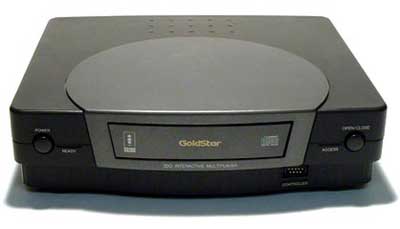 3DO Interactive Multiplayer by Goldstar |
In 1993 another product with great potential arrived, but it was shortly forgotten without having practically any affection to the market or the buyers what so ever. The man behind 3DO Interactive Multiplayer, Trip Hawkins, was also one of the men behind EA, but the final product was the result of an alliance between Panasonic, Sanyo and Goldstar. The console consisted of a high performance 32-bit architecture with a RISC-CPU that was assisted by two graphics-CPUs, plenty of memory with 2MB DRAM and 1MB VRAM along with CD-ROM as the storage medium. All of the prerequisites were there, but a sky-high price and a lacking amount of games, in which most of them didn’t even use all of the consoles abilities, the outcome was foregone even before the console was released. However, 3DO didn’t give up, they continued with developing a follow-up, which where sold to Panasonic who continued the development. But then, just before the launch 1996, it was cancelled, exactly why is unclear, there are some rumors about cowardly wretches that didn’t dare to challenge Sony or Nintendo. Even though the advertising campaign was done and the ads printed Panasonic retreated. The technology were however used in another game-like console, FZ-21S and a even more advanced version, FZ-35S, which was concentrated on companies and highly placed businessmen and were suited for presentations and demonstrations that demanded a more powerful machine e.g. for 3D modeling.
 Sony Playstation |
Frankly speaking, it was Playstation X that came in 1994. Playstation came already in 1991, which was a continuation of an earlier cooperation between Nintendo and Sony called Super Disc. Super Disc was designed to work like MEGA CD did, but was actually a predecessor to the MEGA CD. Playstation could play SNES cassettes, ordinary music CDs but also data CDs. Only about 200 pieces of these data CDs were produces though and none of them left Japan. Because of the PSX’ obscurity outside, and inside Japan was the console simply called Playstation. Sony had chosen to create the Playstation as a CD-only console, i.e., the cassettes were skipped. In 1995, the console was lanced in USA and Europe turning out to be an immediate success. It was lanced backed up by Namco’s Tekken, which also turned out to be a huge success in the US. Later, Sony changed the Playstation X’ name in Japan to simply Playstation, followed by a multimedia unit release called Playstation X, which worked kind of like a DVD player with an hard drive.
However, it would be two years later that the big game release would come. Square had for a long time announced that they would create a new part of their Final Fantasy saga for Sony’s console. I.e., Final Fantasy VII. The expectations were especially high because the promise that the game would be, for the first time, released worldwide. 3.5 million examples were sold just in Japan 1997. The game turned out to be a rarely seen hit and is to this day tributed as one of the greatest games ever made, this despite the fact that the game is far from best in the Final Fantasy series. Not many people outside of Japan had had the chance to experience Final Fantasy earlier though, something Sony was well aware of. And the game took the majority by storm. This was later followed by Gran Turismo, a driving game that promised over 150 cars. Other games at that time could only offer about 8-16 cars (the sequel contained even 3 times as much). Sony took big, almost enormous, steps forward.
The classical set-up of a console + a strong front figure was something Sony had some problems delivering though. They simply didn’t have a front character for their console. They tried, quite desperately, with a lot of characters, but no one had the same charisma, or they were just too bad to measure up to characters like Sonic and Mario. You might say it was somewhat of an identity crisis when they started throwing characters like Crash Bandiccot, Rayman, Lara Croft, Sir Dan Fortesque (MediEvil) and Spyro among others at us. They even managed to lure over gaming titles as Castlevania and Mega Man. This, instead of creating a new front figure, managed to wipe out the classical set-up. Lara Croft was however the most successful one, becoming a motion picture which actually got a sequel. The movies were though a bit better than Nintendo’s earlier attempts.
We mentioned the Saturn earlier in the passing-by, but it probably deserves a little more attention than that. Despite the fact that it didn’t debut until after the Playstation, and didn’t stand a chance against the Playstation’s enormous sales, it still managed to do fairly well in the beginning
One issue that was to the Saturn’s disadvantage (as with the Jaguar) was its very complex internal design. It was built using two CPU’s and another six units to relieve those if needed. It took a great deal of work to really utilize all the power the Saturn offered. This was clearly observed in quite a few games. The fact that SEGA didn’t have a descent SDK (Software Development Kit) either didn’t make things any better. Moreover, the two CPU’s were designed more like Intel’s Hyper Threading technology, than two real CPU’s, i.e. they share a large part of the physics details, thus choking the performance somewhat. This hampered any true multi-threading features of the system. In the end, it proved very difficult to produce good, advanced games at a decent pace.
In the US, especially, the Saturn was on its way toward disaster. Despite this, there were more games sold for the Saturn than the Playstation. This is probably due to the fact that Sony’s console was more of a fad everyone desired, while SEGA was more for the active gamers. In short, Sony’s customers didn’t invest in many games, while SEGA’s did. One of SEGA’s big mistakes was to not translate many of their games for the US, believing they wouldn’t attract buyers anyway. In the end, this analisis proved to be very wrong. SEGA had several games, such as Sakura Wars, and a slew of really good RPG’s that the American and European buyers never got to see. SEGA realized that their console was falling behind both Nintendo’s newly released Nintendo 64 and Sony’s Playstation. They therefore started working on a new console. Two new projects were initiated, one in the US, Black Belt, and one back in Japan, called Katana.
 Nintendo 64 |
Nintendo chose to skip the 32-bit generation and instead go straight for the 64-bit version. It was initially developed under the name Project Reality, much like today’s Revolution, then became Nintendo Ultra 64. Nintendo eventually settled on the name Nintendo 64. The console was co-developed with SGI (Silicon Graphics) into a very potent machine. However, it suffered from a lack of sufficient memory. Both miniscule RAM and the use of cassettes forced game developers to decrease the resolution of their games, which in conjunction with mipmaping and bilinear filtering often created very blurry or fuzzy images. Even though games for the N64 had a higher complexity and more polygons, the low resolution ruined much of the experience. The advantage was of course almost no waiting when loading the games. Eventually, the textures were improved by adding an expansion pack (4MB RAM) and producing higher capacity cassettes. The games that arrived toward the end of N64’s life really demonstrated the true power of the N64, something we never got to see with the SEGA Saturn. The console was released along with the game Super Mario 64, which raised the standards for platform games.
Nintendo also had an excellent a great software partner, RARE, which managed to release great innovative titles such as GoldenEye, Donkey Kong 64, Blast Corps, Diddy Kong Racing, Jet Force Gemini etc. The decision to stick with cassettes, even though its lack of storage capacity, was simple. Both Playstation and Saturn suffered from excruciating loading times, had trouble with illegal copies, one was locked into the hardware, and one had to use memory cards for saving games.
The final blow for the N64 was Square’s choice of machine for Final Fantasy VII. Square had previously used Nintendo’s consoles without any problems, but with the newest Final Fantasy, cassettes simply weren’t enough. A severe set-back for Nintendo. The fact that cassettes also cost more to produce only made things worse. Still, sales went very well, and Nintendo managed to grab second place from Saturn, beat only by the Playstation. The console didn’t last very long, and was soon replaced by the GameCube in 2001.
 Sega DreamCast |
Meanwhile, SEGA had moved on with the development of the DreamCast and chose to go with the Japanese Katana. DC was released in the end of 1998 in Japan, and 1999 in USA and Europe. SEGA had learned from their mistakes with the Saturn and followed Sony’s example by showcasing its console across the north-American continent to entice people with titles such as Soul Calibur and Sonic Adventure. DC was the first console with a built-in modem and, as a result, supported online gaming. It didn’t use a regular CD-ROM either, employing a GD-ROM instead.
This was a way to prevent pirated copies, which ended up being a complete failure. Not only did people manage to produce illegal copies without trouble, GD-ROM disks were also produced at a lower yield, increasing costs. Unfortunately, Sony also had an ace up their sleeve. In 2000, Sony released the Playstation 2 which was backwards compatible with the original Playstation games. The PS2 was announced a whole year earlier and managed to put a stop for any DC sales. In the beginning of 2001, SEGA made the announcement where they officially withdrew from the console market.
 Sony Playstation 2 |
As said, the Playstation 2 was launched 2000. Since Sega had failed with its DreamCast and Nintendo and Microsoft had not yet launched their consoles, it seemed to be a free market for Sony. But it was not that simple, for several reasons; lack of consoles, a new architecture which many developers complained about for a long time, since it was almost unnecessary difficult and advanced to write games for the console. The console it self was not really that impressive but actually lived much on what Playstation had already built. In terms of pure technical specifications the DC was clearly superior.
There was a lot of high quality games released in 2001 though that shot the sales numbers right through the ceiling. Sony had now definitely taken over as the leading manufacturer. The console suffered from a high price though, which above all Nintendo’s console didn’t. This forced Sony to push the prices to levels that weren’t very healthy for the economics, but which guaranteed their position. Furthermore, the sales of games covered it up more than enough. Because if it was something that Sony could show off that the other couldn’t, it was an impressive game library, and even if it contained a lot of junk, the amount of games was enormous. A large reason for the higher price was PS2’s ability to play back DVD movies and being able to send picture and sound from consoles to TVs with higher quality signals before.
In 2004 Sony launched an updated version of the PS2 which was 75% smaller and had a much more discrete and aesthetic appealing exterior, even if the first console wasn’t very ugly it was pretty big. However, the problem was just that it was an extreme shortage of these consoles, much thanks to deliveries that got caught in customs and huge problems during the manufacturing process. Another move which proved to be smart is that they chose to use controllers which strongly reminded of the earlier controllers with the launch of the PS2.
Nintendo took the step to optical media with GameCube. It was no ordinary medium though, like CD or DVD, but they used a special version which reminded of miniDVD called the GameCube Optical Disc. You could store up to 1.5GB on these which was more than enough for most of the games released. Nintendo did also something that they haven’t done before, instead of bossing around its third party manufacturers, Nintendo looked them up, asked for help and supported their conduct. This lead to that Nintendo once again had a large amount of exclusive titles to offer, just like the old times but now with a somewhat more open and friendlier attitude.
GameCube lived very much on its low price tag though. Nintendo’s game supply was still limited in terms of games that provided ”adult” content, so popular games such as GTA was not even to think about. This in combination with the many games with the… cute… Pokemon gave the console a child label, especially in the USA. Nintendo had also lacked behind in terms of online services and new features. Both Microsoft and Sony were far ahead of Nintendo in this area. Nintendo did not manage to keep the same market share with GameCube as they did with N64, but they can at least brag about being profitable, which both Sony and Microsoft failed with during long periods. If it’s any real comfort, I don’t know.
 Microsoft XBOX |
What’s left then? Ah, Microsoft’s console, the Xbox. It was launched in 2001 with hopes of MS at the time being able to dominate the console scene as well. They did not even manage to outrun Nintendo’s tottering console though, and they were still selling a lot less than Sony. Xbox had a game supply which reminded of Sony’s in terms of style, but a lot less, but would offer both more impressive graphics and performance. Xbox did suffer from an obvious problem though: good and original games.
At the start there weren’t many games released and very few of them were considered good, and those titles did often exist on the PS2 too. Xbox was more or less dependent on the game Halo for a beginning. The next year things started to happen though, even if it didn’t go so well for the console, according to many. Microsoft launched Xbox Live! and the really good games were starting to come more often. As Xbox got more and more market share, many game developers started to break their habit on only releasing games for PS2 and started to release them parallel for Xbox. This led to that the Xbox at least got a bigger supply of games.
MS has also tried to launch its console in Japan, but failed catastrophically. The Japanese didn’t accept the console, much because of lack of support from Japanese game developers, terrible design and the somewhat small offer of games, especially those targeted for Japan. Even if Xbox Live! Is seen as a success by MS you can’t bypass the fact that less than 10% of everyone that owns an Xbox has ever used it. MS hasn’t pretended the least that Xbox was considered a learning process. They didn’t count on being profitable the first three years and that showed to be correct. It took four years actually, and it was still a very small profit. Xbox has taken a lot of crap from many and that’s basically unfounded crap. MS has gone from nothing to having one of the best selling consoles in the world. Xbox is a success without doubt, the only minus I can think of is the lack of variety among the games, but seen to the whole the console is completely new and it went up against two corporations that has 40 years of experience in the business together, and it still has a pretty impressive library.
I forgot to mention a console, if that’s what you can call it. Gales of wind has blown around Infinium Labs’ console mostly because of the launch which never appears to happen. The console is quite simply a computer, based on an Athlon XP 2500+, a GeForce 5700 Ultra, an nForce2 Ultra 400 chip and 40GB of local “cache”. The console is shipped with Windows XP Embedded and the whole idea is built on that through a broadband Internet connection you will always have access to a large library of titles, new and old. You shall never have to leave the home to get the latest titles but these should come home to you instead. Phantom supports the ordinary PC games, ported console games and is supposed to be able to play back movies and music without any problems. To this date we haven’t seen Phantom or anything that looks like it. There are questions whether the console actually exists at all. Those who live will see.
Now we’re pretty much at today. So what do we have to expect now? Playstation 3, which is supposed to have an even more complex construction than its predecessor, the Xbox 360, which shall show us what MS has learned with the Xbox, and “Revolution” which is going to recapture that which Nintendo lots with GameCube.
Five pages of history. 21 years all in all. And in 3 months the next chapter begins. It’s no easy choice that you as a consumer is facing, but in the next part we might be able to help you sort out the differences between the forthcoming consoles. We end this article with a timeline and perhaps some more useful material.
The timeline is a bit misleading, specially in the case of Neo Geo, but also regarding Sega’s early consoles that weren’t that popular, apart from the Mega Drive/Genesis that where popular in the beginning. 3DO and Atari made two short visits, NEC a somewhat longer while Sony and Microsoft have managed to stay in the market.
We hope that you have learned something new and that this will be of benefit to you later on. Just imagine some of these ice breakers down at the pub:
”Oh, your eyes make me remember the clear-blue colours Sonic had when he ran about on my TV when I was little”
”The only thing I can think of that is more red than your lips, must be the hat that Mario wears”
”There are two things that can make my heart beat as fast as it’s beating now: one is Gran Turismo and the other is you”
”If I had to choose three things to bring to a deserted island it would be my TV, a NES and of course, you”
”Your dark eyes and your surging hair make me think of when I cleared SMB for the first time. You are a lot like a princess, only more high res”
”How would you like to dance with someone that has cleared 100% at DKC2?”
”DC’s short life must have been the ultimate disappointment would a dance be too much to ask for right now?”
”There are few moments in life that can beat the sensation when I at eleven, opened a Christmas present that contained a Mega Drive. But I feel that this night could top it if you would dance with me.”
And last, but not least, a remake of a classic:
”Would you like to go home with me and check out my new Metroid-alarm clock?”
I can see it before me, can’t you?
Thanks goes out to cypress_h and Gilgamesh for helping out with the pictures from Gran Turismo.
Also big thanks goes out to Nintendo and NEC, that above else only took only two days to find a 20 year old press image.



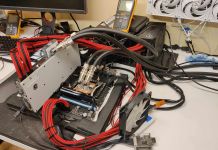

















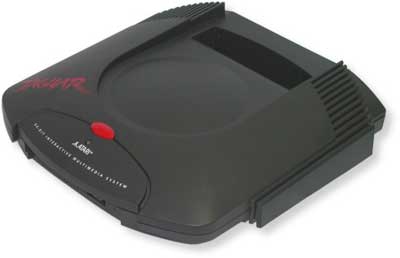
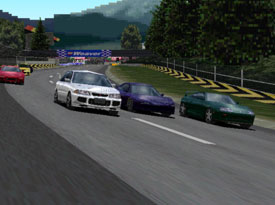
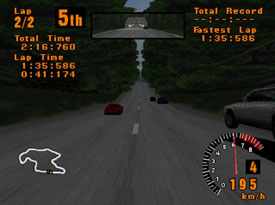






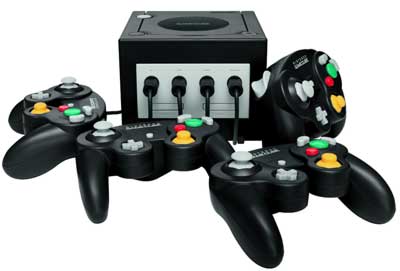


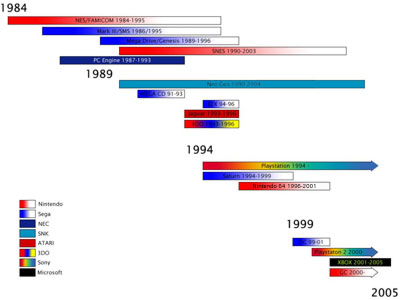



Leave a Reply